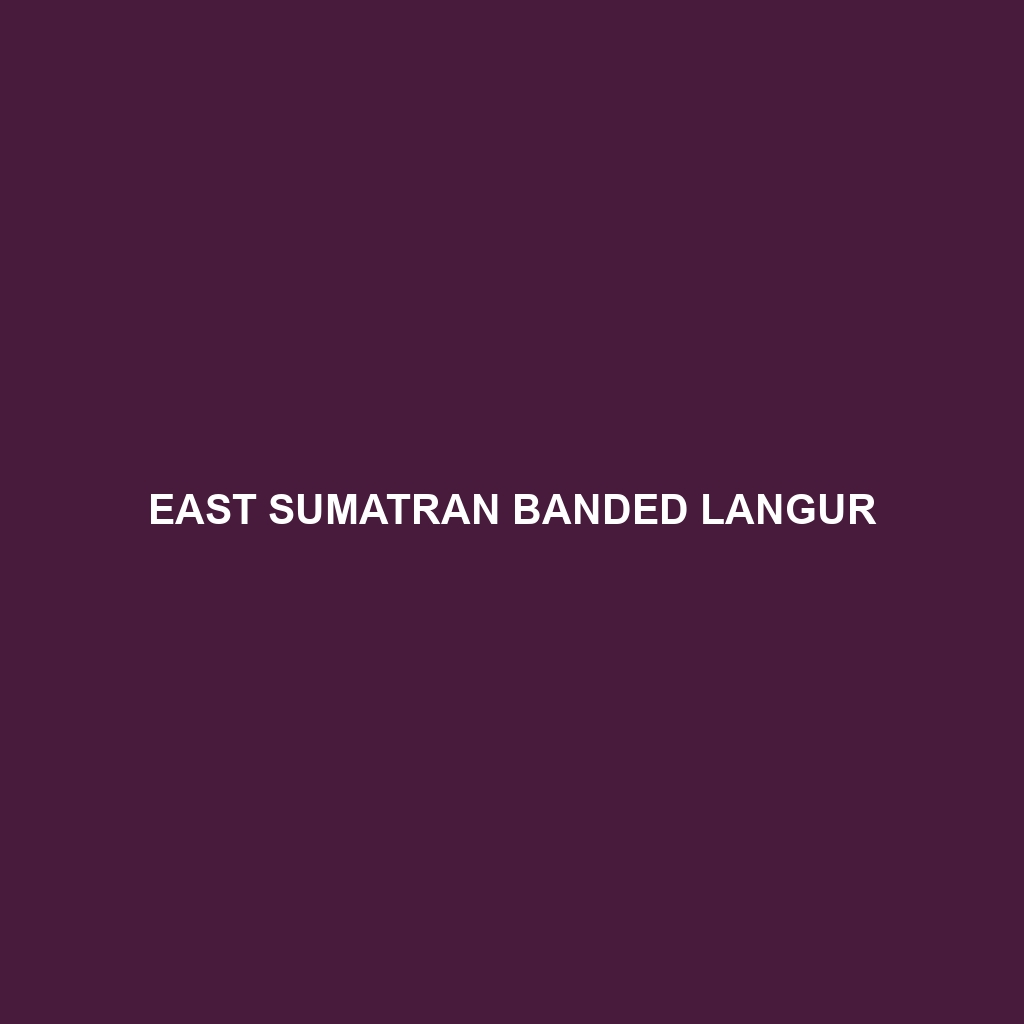East Sumatran Banded Langur: A Detailed Description
:
The East Sumatran Banded Langur (Presbytis femoralis percura) is a captivating primate species indigenous to the tropical rainforests of Sumatra. Known for its distinctive black-and-white banded appearance, this langur is a member of the Cercopithecidae family. As an arboreal and highly social animal, it plays a crucial role in its ecosystem, contributing to seed dispersal and forest health.
Physical Characteristics:
Size: Adult East Sumatran Banded Langurs typically measure around 45 to 54 centimeters in body length, with an additional tail length of approximately 60 to 75 centimeters. They weigh between 6 to 8 kilograms.
Coloration: These langurs exhibit a striking black-and-white coloration. Their bodies are primarily black with prominent white bands and patches on their face, chest, and inner limbs. The coloration provides effective camouflage in the dappled light of the rainforest canopy.
Special Features: The langur’s long tail is not only a balancing tool but also a distinctive feature, often used for communication among individuals. Their slender limbs and long fingers are adapted for agile movement through the treetops.
Behaviors:
Social Interactions: East Sumatran Banded Langurs are highly social, typically forming groups of 10 to 15 individuals, consisting of one dominant male, several females, and their offspring. Social bonds are reinforced through grooming and vocalizations.
Feeding Habits: These langurs are primarily folivorous, feeding on a diet of leaves, young shoots, fruits, and flowers. Their specialized stomachs allow them to digest tough plant materials efficiently.
Ecological Roles: As seed dispersers, East Sumatran Banded Langurs contribute significantly to the health and regeneration of their forest habitats. By consuming fruits and later excreting the seeds, they facilitate plant diversity and forest growth.
Habitats:
Range: This species is endemic to the lowland and montane rainforests of East Sumatra, often dwelling in areas with dense canopy cover.
Habitat Preferences: They prefer primary and secondary forests with abundant food resources and tall trees, which provide both sustenance and protection from predators.
Adaptations:
Arboreal Adaptations: Their prehensile tail and highly flexible limbs enable them to navigate the complex three-dimensional environment of the rainforest canopy with ease.
Digestive Adaptations: Possessing a multi-chambered stomach, these langurs can break down fibrous plant materials, allowing them to thrive on a folivorous diet.
Conservation Status:
Threats: The East Sumatran Banded Langur faces several threats, including habitat destruction due to logging, agricultural expansion, and human encroachment. Additionally, hunting and the illegal pet trade pose significant risks.
Conservation Efforts: Conservation initiatives focus on habitat protection, anti-poaching measures, and raising awareness about the species’ plight. Organizations are working to establish protected areas and corridors to ensure the langurs’ survival.
Fun Facts:
1. Vocal Communication: East Sumatran Banded Langurs have a rich repertoire of vocalizations, including calls that signal alarm, coordinate group movement, and establish social bonds.
2. Gregarious Nature: Grooming is an essential social activity, not only for hygiene but also for strengthening group cohesion and reducing tension.
3. Camouflage Mastery: Their unique coloration allows them to blend seamlessly into the intricate patterns of light and shadow in the forest canopy, providing effective concealment from predators.
The East Sumatran Banded Langur is a remarkable example of nature’s adaptability and the intricate balance of rainforest ecosystems. Conservation efforts are essential to preserve this species and the biodiversity of their habitat. By understanding and protecting the East Sumatran Banded Langur, we contribute to the broader mission of safeguarding our planet’s natural heritage.
